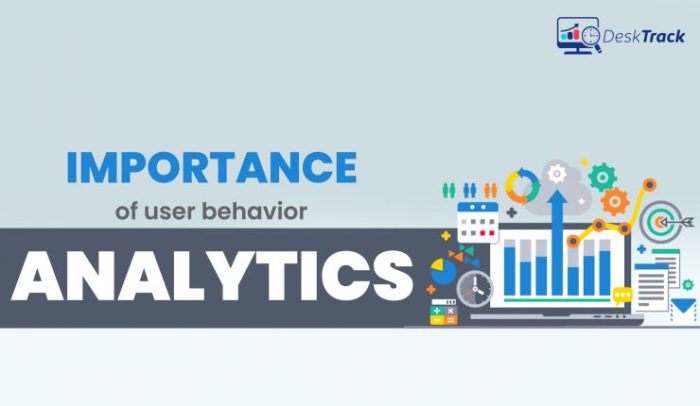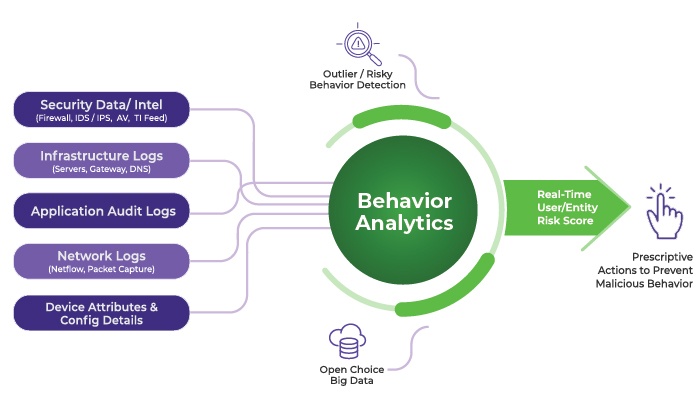Kicking off with User Behavior Analytics, this topic delves into the world of analyzing user behavior to help businesses make informed decisions. From understanding the concept to exploring different types of user behavior data, this discussion is a must-read for companies seeking to enhance their data strategies.
Introduction to User Behavior Analytics
User Behavior Analytics is the process of tracking, collecting, and analyzing user data to understand how users interact with a website, application, or system. By examining patterns and behaviors, companies can gain valuable insights into user preferences, tendencies, and actions.Analyzing user behavior is crucial for businesses as it provides valuable information that can be used to improve products, services, and overall user experience.
By understanding how users navigate a website, where they spend the most time, what actions they take, and what factors influence their decisions, companies can tailor their offerings to better meet customer needs and expectations.User behavior analytics helps companies make data-driven decisions by providing concrete evidence and insights based on user interactions. By leveraging this data, businesses can optimize marketing strategies, enhance product features, personalize user experiences, and ultimately drive growth and success.
Types of User Behavior Data: User Behavior Analytics
User behavior data comes in various forms and can provide valuable insights for businesses to improve their strategies. Let’s explore the different types of user behavior data and their significance.
Website Traffic Data
Website traffic data includes metrics such as the number of visitors, page views, bounce rate, and time spent on site. This data is crucial for understanding how users interact with the website, which pages are popular, and where improvements can be made. Businesses can collect this data using tools like Google Analytics or website plugins.
Clickstream Data
Clickstream data tracks the sequence of clicks a user makes while browsing a website. This data can reveal user navigation patterns, popular pathways, and areas where users may be dropping off. Businesses can analyze clickstream data to optimize website layout, content placement, and call-to-action buttons.
Conversion Data
Conversion data measures the actions users take that lead to a desired outcome, such as making a purchase, signing up for a newsletter, or filling out a contact form. By analyzing conversion data, businesses can identify bottlenecks in the conversion process and make adjustments to increase conversions. This data can be collected through tracking pixels, conversion tracking tools, or CRM systems.
Social Media Engagement Data
Social media engagement data includes metrics like likes, shares, comments, and followers. This data helps businesses understand how their audience interacts with social media content, which posts are resonating with users, and how to improve engagement. Businesses can collect social media engagement data using built-in analytics tools on social platforms or third-party social media management tools.
Email Marketing Data
Email marketing data encompasses metrics such as open rates, click-through rates, and subscriber behavior. By analyzing email marketing data, businesses can tailor their email campaigns to better resonate with subscribers, improve engagement, and drive conversions. This data can be collected through email marketing platforms or marketing automation tools.
Tools and Technologies for User Behavior Analytics

User behavior analytics is a crucial aspect of understanding customer interactions and improving business strategies. To effectively analyze user behavior, various tools and technologies are utilized in the industry.
Popular Tools for User Behavior Analytics
- Google Analytics: A widely used tool that provides detailed insights into user behavior on websites or apps.
- Adobe Analytics: Offers advanced features for tracking user interactions and optimizing digital experiences.
- Hotjar: Enables heatmaps, session recordings, and surveys to understand user behavior visually.
- Kissmetrics: Focuses on customer behavior analysis and segmentation for targeted marketing strategies.
Comparison of Different Technologies
- Web Analytics Tools: Primarily used for tracking website traffic, page views, and user demographics.
- Machine Learning Algorithms: Utilized for predictive analytics and identifying patterns in user behavior data.
- A/B Testing Platforms: Allow for testing different versions of a website or app to determine user preferences.
- Customer Relationship Management (CRM) Systems: Integrating user behavior data with customer profiles for personalized marketing.
Advantages and Disadvantages of Specific Tools
- Google Analytics: Advantages include a user-friendly interface and a wide range of features. Disadvantages may include limited customization options for advanced analysis.
- Hotjar: Provides visual insights into user behavior, but may lack in-depth data compared to other tools.
- Adobe Analytics: Offers advanced tracking capabilities but may be complex for beginners to navigate.
- Kissmetrics: Focuses on detailed customer behavior analysis but may require additional integration for comprehensive insights.
Implementing User Behavior Analytics

Implementing user behavior analytics in a business involves several key steps to ensure successful deployment and utilization of the data collected. By following best practices and being aware of potential challenges, companies can effectively leverage user behavior analytics to drive informed decision-making and improve overall business performance.
Steps in Implementing User Behavior Analytics
- Define Goals and Objectives: Clearly Artikel what you aim to achieve with user behavior analytics and how it aligns with your business objectives.
- Identify Key Metrics: Determine the specific user behavior data points that are most relevant to your goals and will provide actionable insights.
- Select Appropriate Tools: Choose the right analytics tools and technologies that can effectively collect, analyze, and visualize the data for meaningful interpretation.
- Implement Tracking Mechanisms: Set up tracking mechanisms to capture user behavior data across various touchpoints and channels.
- Analyze and Interpret Data: Use the collected data to analyze user behavior patterns, trends, and anomalies to gain valuable insights.
- Take Actionable Steps: Based on the insights gained, make informed decisions and implement strategies to optimize user experience and business outcomes.
Best Practices for Setting Up User Behavior Analytics Systems
- Ensure Data Quality: Regularly audit and validate the data collected to ensure accuracy and reliability.
- Focus on Privacy and Compliance: Adhere to data privacy regulations and obtain user consent for tracking activities.
- Integrate Data Sources: Consolidate data from multiple sources to gain a comprehensive view of user behavior across platforms.
- Empower Stakeholders: Provide training and resources to stakeholders to effectively utilize user behavior analytics insights.
- Continuously Improve: Regularly review and refine your analytics processes to enhance the effectiveness of your user behavior analytics systems.
Challenges in Implementing User Behavior Analytics
- Data Security Concerns: Safeguarding sensitive user data and ensuring compliance with regulations can pose challenges in implementing user behavior analytics.
- Data Integration Issues: Integrating data from disparate sources and systems can be complex and time-consuming, impacting the accuracy and reliability of insights.
- Skill Gaps: Lack of expertise in data analysis and interpretation among team members can hinder the effective implementation of user behavior analytics.
- Scaling Analytics Capabilities: As the volume of user behavior data grows, companies may face scalability challenges in processing and analyzing the data efficiently.